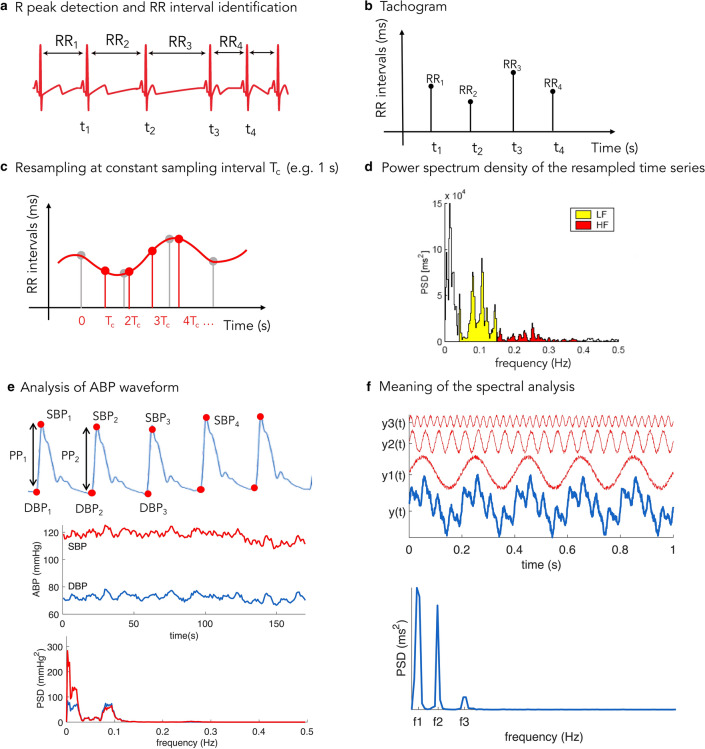Fig. 4.
Basic concepts to estimate heart rate and blood pressure variabilities. a Identification of R peaks in the ECG signal—in sinus rhythm—permits assessment of the RR interval duration for consecutive beats. b The tachogram displays RR intervals for each beat; this time series analysis permits a first visual inspection of the variability in RR interval duration, computed as the mean RR interval and its standard deviation. c Before the spectral analysis, the time series needs to be resampled at evenly spaced time intervals (Tc = sampling interval which corresponds to fc = 1/Tc sampling frequency). d Power spectrum density (PSD) computation and spectral analysis: as the parasympathetic nervous system (PNS) acts at higher frequencies than the sympathetic nervous system (SNS), the region associated with high frequency (HF, 0.15–0.4 Hz) estimates the PNS contribution to RR interval modulation, whereas the low frequency (LF, 0.04–0.15 Hz) represents mainly the SNS contribution; LF and HF indexes represent the PSD areas in those bands. e Similar to HRV, beat-to-beat series of systolic (SBP) and diastolic (DBP) blood pressure values lead first to the time domain analysis and, after resampling, to PSD computation and spectral analysis (NB: in case of blood pressure, HF variations are not related to the PNS, but mainly to the respiratory activity). The simplest way to assess the baroreflex sensitivity consists of calculating the ratio between LF components of both SBP and RR series, in their respective PSD computation. f The spectral analysis permits to disentangle the individual contributions of several modulators (in this example, the signal y(t) is composed of three harmonics and the PSD can clearly identify those harmonics with the low-frequency signal, y1(t), contributing more than the other two)

